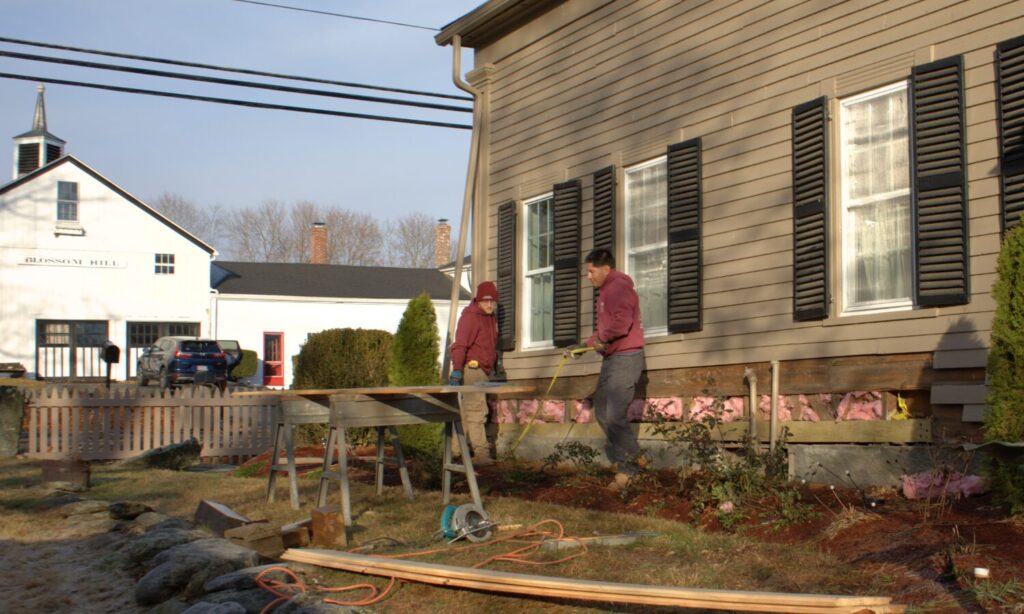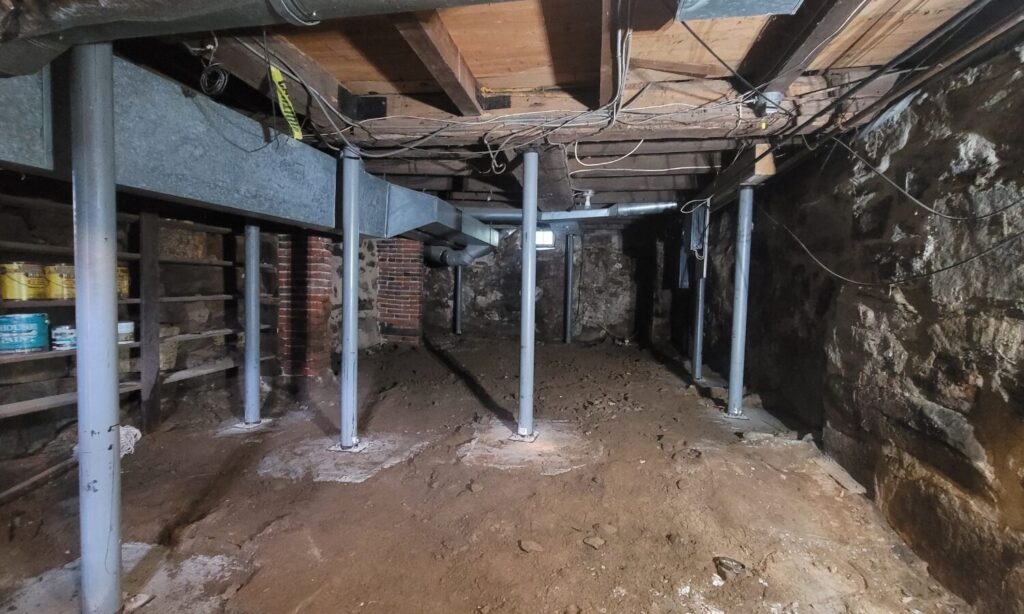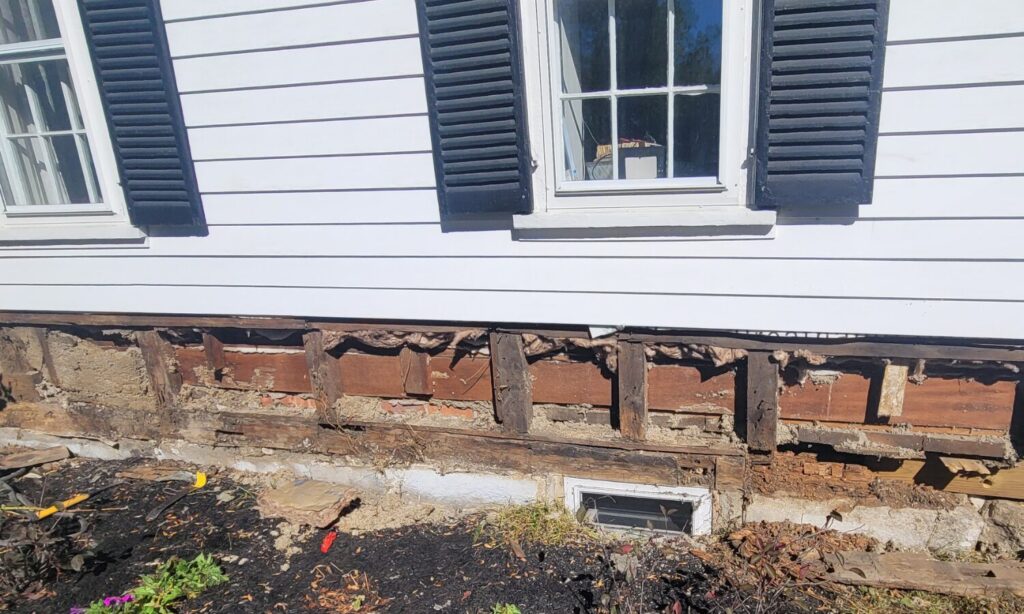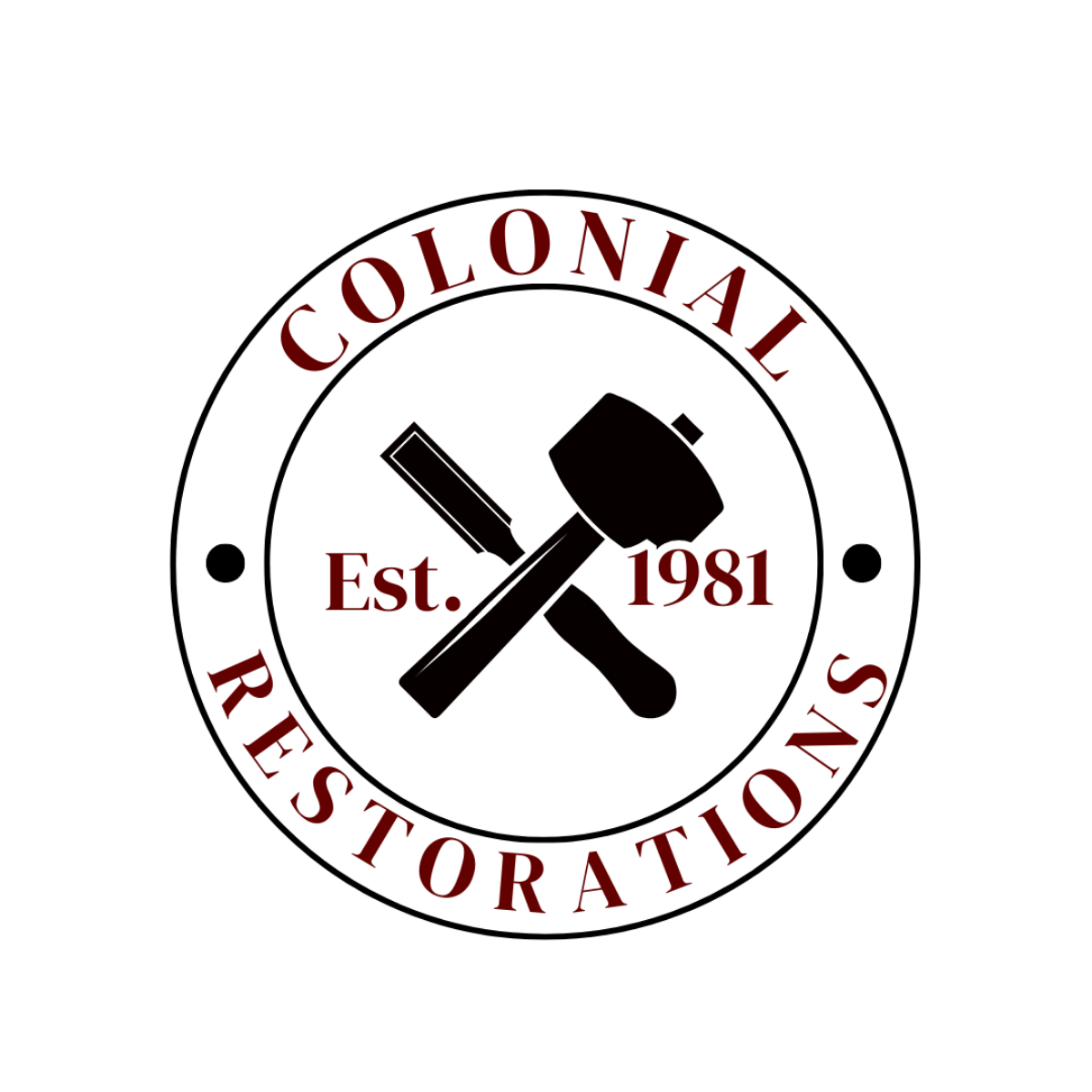
When a foundation begins to settle, it’s more than a structural issue, it’s a preservation challenge. Settling occurs when the soil beneath your home shifts or compacts, causing the foundation to sink unevenly or move out of alignment. While some settling is expected over time, especially in historic or colonial homes, excessive or uneven settling can lead to serious structural problems.
If left unaddressed, foundation settling can worsen over time. Common related issues include rotting sills and/or floor joists, post & beam instability, and the breakdown of mortar in old stone or brick foundations. That’s why foundation repair and restoration is essential, not just to stabilize the structure, but to preserve the historical integrity of your home.
At Colonial Restorations, we specialize in assessing and stabilizing settling foundations and the corresponding wooden structural elements (sills, beams, joists) using historically accurate techniques.
Understanding the Signs:
Unsure if your foundation is settling? Foundation issues aren’t always an emergency, but they can be if you let them go over time. Here are some of the most common red flags that your old home may need foundation repair and restoration:
- Uneven floors or sloped rooms
- Doors or windows sticking
- Cracks in plaster or drywall
- Gaps between walls and floors
- Visible movement in stone or brick foundation walls
- Exposed sill rot or insect damage
These warning signs often develop slowly, but over time structural damage can significantly impact the safety of your home.

Foundation Repair & Restoration
When it comes to historic home restoration, not all solutions are created equal. At Colonial Restorations, we approach every job with a mindset that goes beyond the quick fix. This involves stabilizing the structure, correcting immediate problems, and preventing further damage. For example, replacing or reinforcing post & beams or adding concrete footings. We use time-tested techniques, which include:
- Replacing rotted sills with matching species wood and joinery
- Preserving original post & beam framing connections
Old vs. Modern Structures: Why Wooden Foundations Behave Differently
Historic homes were built very differently from modern ones, and many colonial or historic houses used stone foundations and post & beam frames instead of today’s concrete slabs or poured footings. Builders used traditional mortise and tenon joinery, which allowed for flexibility but meant that when one element failed, such as a sill beam, the whole frame could shift. These homes were often set on dry-laid stone or brick piers without modern waterproofing, making them more prone to settling as soil conditions changed.
Modern homes, by contrast, use pressure-treated lumber, steel fasteners, and reinforced concrete for added resistance to decay and pests. They’re anchored to poured or block foundations that distribute loads more evenly. While these materials are durable, they don’t always integrate well with historic structures. That’s why restoring a wooden foundation requires matching original materials and methods to preserve both the structure’s stability and its historic authenticity.
Foundation Repair Costs
Foundation repair and substructure costs vary widely depending on the severity of the issue, the size of the home, and the restoration detail required. The best way to calculate the cost is to schedule a structural evaluation to determine the most effective and appropriate restoration plan. Contact us and we’ll get back to you within 24-hours regarding your evaluation inquiry.
After evaluating your property, it’s not uncommon to find the issue is with your sill beam rather than the foundation itself. At Colonial Restorations we specialize in the sill replacement of old historic homes with foundations. This process is where we carefully lift, remove, and replace sills using methods that protect and preserve the craftsmanship of your home
Why Colonial Homes Require a Specialized Touch
Colonial and historic homes weren’t built like today’s homes, which is why we take a specialized approach to restoration:
- Materials matter – oak, chestnut, and pine framing should be matched in species and grain. Using modern wood or treated lumber often compromises both appearance and performance.
- Joinery is key – we preserve traditional mortise and tenon joints rather than replacing them with modern nails and brackets.
Help is On the Way!
We’ve been specializing in historic structural repair and restoration since 1981. If your old home needs structural repair, sill replacement, or an expert evaluation, we’re here to help you protect what matters most.
Our full list of services include:

Final Thoughts
If you’ve noticed signs of a shifting in your home, contact Colonial Restorations today.
Serving Massachusetts and beyond!
Learn more at cr1981.com
Schedule an evaluation: 508-735-9900

Leave a Reply